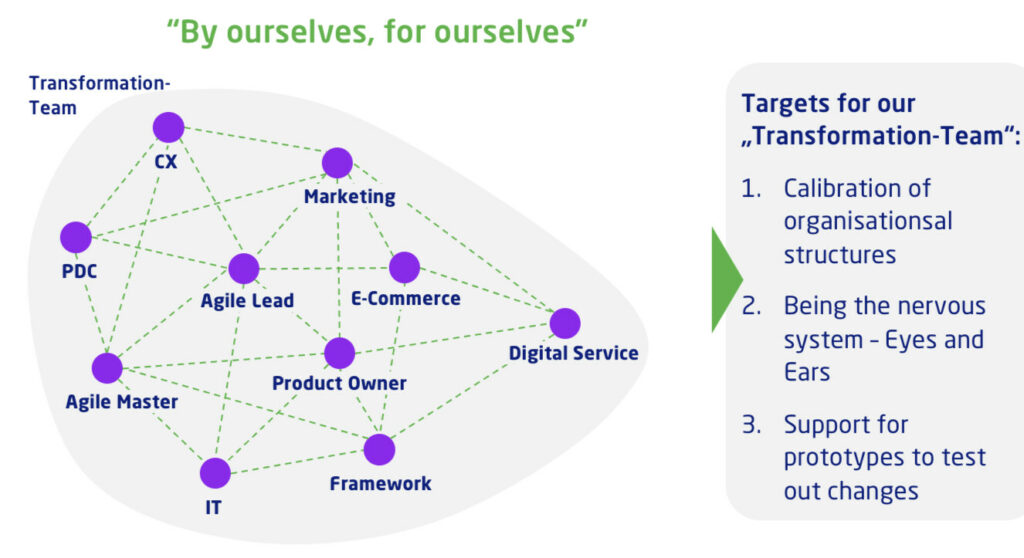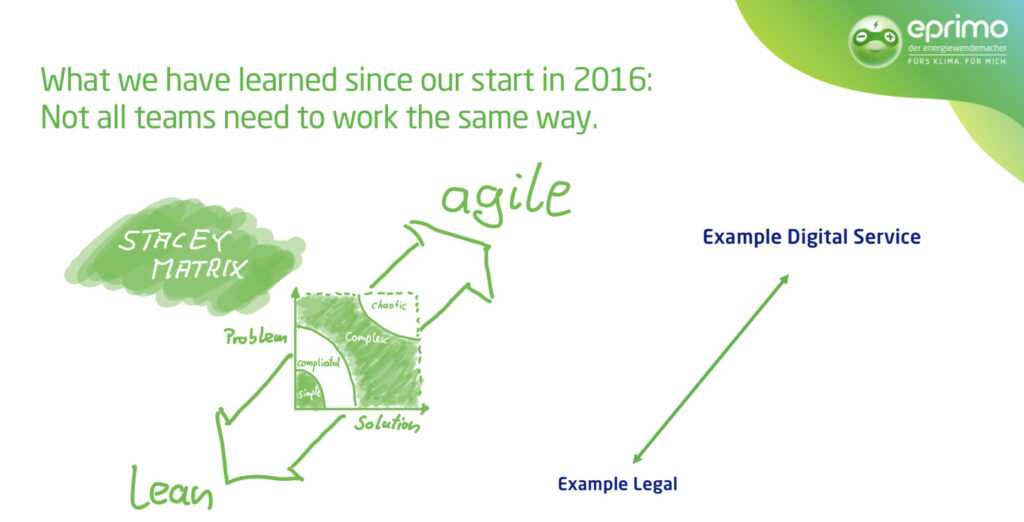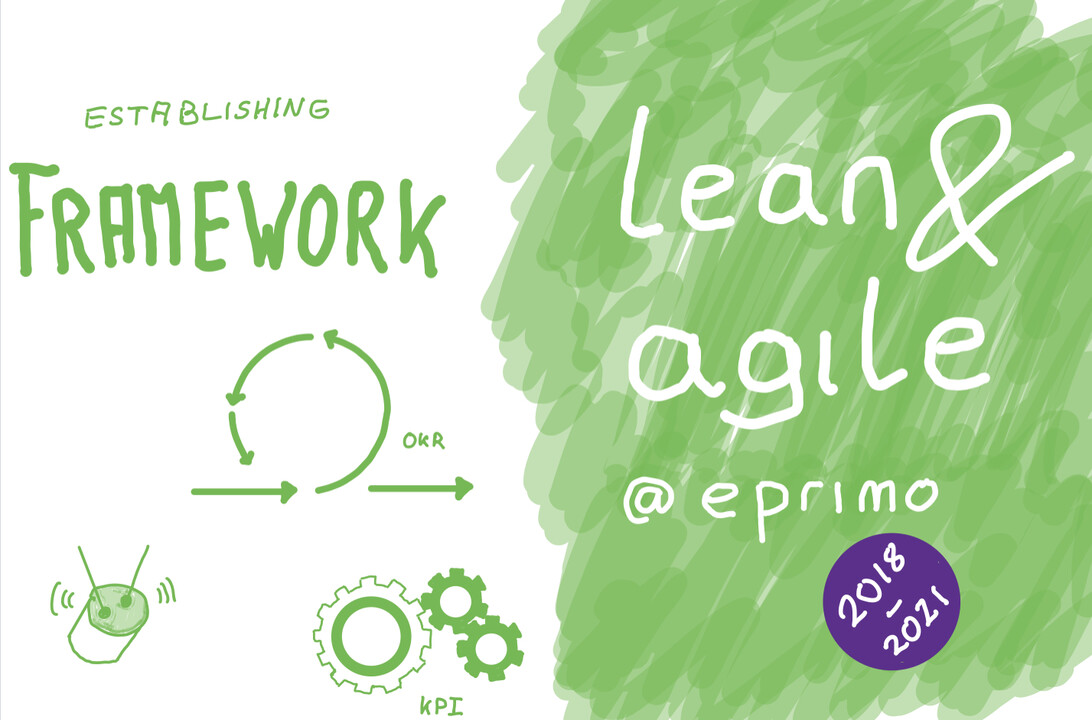This is part 5 of a series of blogs reflecting our transformation lean&agile at eprimo.
Changemakers kicking of the transformation
When we decided to go for lean&agile at scale, some discussions took place. Why a do a transformation at all, if business targets are met? Never stop a running machine! Is it necessary to start now? It was very helpful in the beginning to invite all changemakers in the company to team up – those who were already driving transformation initiatives, prototypes or tools, and those who were willing to do so. The team consisted of approx 10 changemakers out of all functions, roles and levels out of the company. Their mission – Make eprimo transform to the next level.

At the very beginning, the transformation team, as it was called further on, created a common understanding of the transformation and made sure that the transformation process was reflected upon and adapted on a regular basis. We were convinced that this transformation was an agile product itself, difficult to plan and complex per se. We also intended to develop and create our culture further out of this team, building on the strong eprimo DNA, i.e., to always be proactive and ambitious.
Credo – By ourselves, for ourselves
For this transformation, an Agile Foundation was laid, role descriptions drafted, tested and approved. Ways of working were defined, prototyped and scaled up. How? Via experiencing and applying them in the Transformation Team Setup and afterwards in their respective teams. Eating their own dog food. Why start a meeting with a checkin?

Why build an inconveniently large backlog? How to deal effectively with tension? Why are energizers in between so powerful? All these questions were considered by those first change-makers of the team, which were ambitious, curious and eager to apply what they learned. By rolemodelling in all teams and meetings, these change-makers formed the critical mass of changemakers needed to boost to the Next Level in our company.
Shaping the adequate HOW for every team
Of course we had learning curves. There were some initiatives without comitted targets, some initiatives without alignment that resulted in negative impact on others, some misunderstandings, and of course some mistakes in the process. And lots of emotions alongside. Nevertheless, the team learned quickly and started to agree on their own backlog changes and on a limited number of initiatives to pick. Fundamental questions came up – what is a productive number of agile members per team? Do all teams need to be agile?

When the famous Stacey Matrix was discovered, the transformation team leapfrogged. Changemakers understood how agile impacted the way of working in different forms. Agile in agile environments and lean in stable environments. The trained ‘performance muscle’ in the operations team rolemodeled lean, whereas the innovation team rolemodeled and trained the newly discovered agile muscle. Best of breed, according necessity but with agile mindset looking out for the best performing setup.
With increasing agile maturity, some changemakers stepped back and returned to their respective roles, driving change here and now. New members also joined; driving new topics like framework, a Customer Centric Culture or agile leadership. Today the transformation team ensures that change takes place in an aligned way. I.e., if initiatives are about to impact the eprimo system, upfront approval from the transformation team is required.
Health check – Does the transformation deliver?
From the very beginning we wanted to make sure that the transformation itself was delivering on our ambitions. Performance targets were attached to the transformation to see progress on the WHAT side. At the same time we initated a companywide survey for all employess to give structural feedback on what they perceived as the HOW of the transformation. We call it the Health Check. It provides evidence about how the transformation evolves across the company, and if developments are really effective in the teams or the whole company. It also provides insights on the ‘change journey’ of teams. Moreover, this helped identify a heatmap of the company, prioritise initiatives, balance the transformation across the units, and reflect in a systematic way. Learning at scale, here and now.

Next Level has always been driven by the Transformation team in different roles, but mindset and aspirations have always been the same – they are within each one of us. WE are driving change by ourselves, for ourselves.
Take Home Message – Invite your changemakers to form a transformation team, driving and overseeing the change and thus creating the necessary culture.







